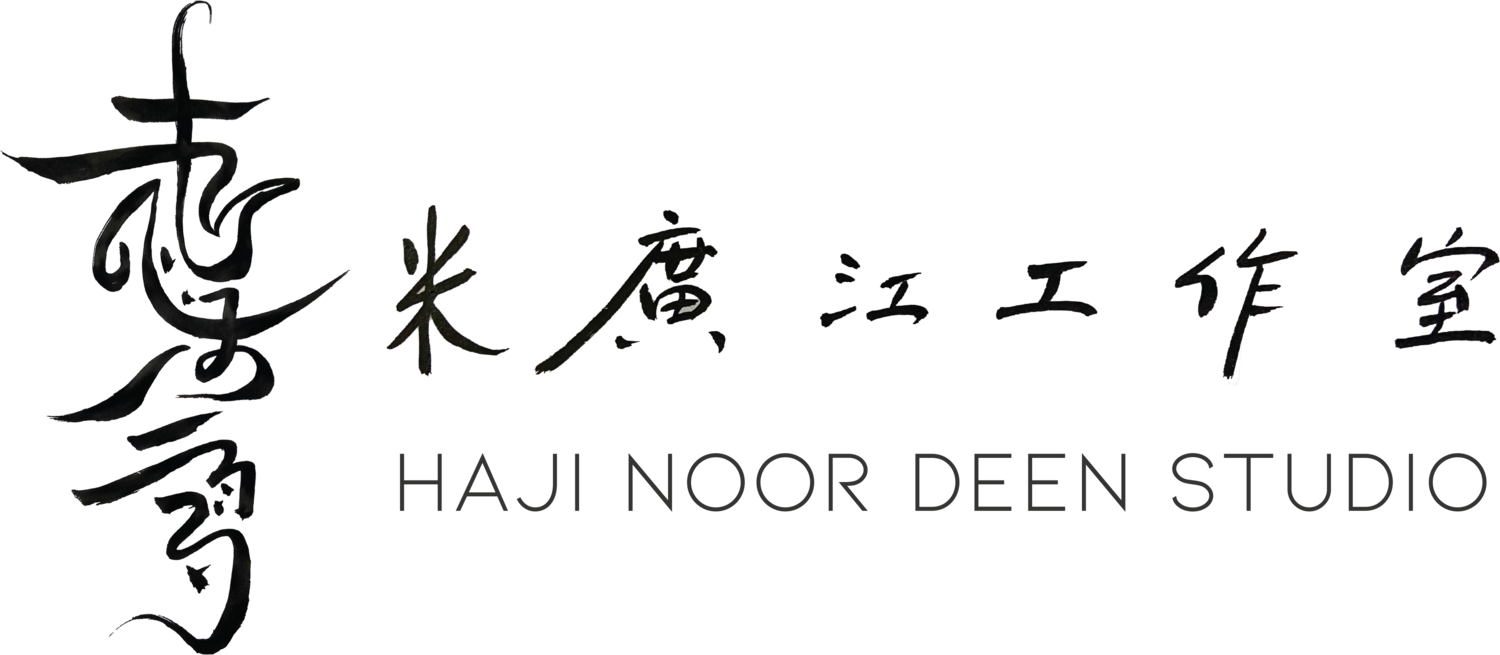Testimonial from Harvard
The “opening up” policy in China during the 1980’s gave birth to new indigenous artistic and cultural expression; thus calligraphers among the Muslim Minority Nationality peoples of China were able to practice openly and with official sanction their singular calligraphic art — Arabic in origin yet uniquely Chinese in style, marked by a characteristic brushwork. This was an art that the Chinese Muslims throughout the centuries used abundantly in their daily living context. These Chinese Muslim artists were also able to market and exhibit their work both locally and internationally,awakening a growing worldwide interest in this remarkable art form.
Haji Noor Deen Mi Guang Jiang, inspired by his travels and study in Egypt and Kuwait, was the first such artist to travel to the Arabic and Western worlds to market and exhibit his scrolls of Chinese style Arabic calligraphy showing many traditional styles and design combinations. In 2000, he published a book entitled "The Most Famous Writings of the Bismillah in Six Hundred Different Shapes" and containing a collection of examples of the calligraphic form of Bismillah from various countries and centuries. The purpose of the publication was to exhibit the wide variety of beautiful calligraphic designs in use among the Chinese Muslims in their homes and Mosques and elsewhere in the context of their daily lives; and to illustrate his discovery that: “ To each of the Arab calligraphers his own personal style in writing the Bismillah which exemplifies infinite creative thought leading to joyful appreciation for people”.
Today Haji Noor Deen Mi Guang Jiang presents us with his second book, "Selections of Arabic Calligraphy in Chinese Style". This volume is a collection of 158 examples of the most beautiful pieces of his calligraphic work over a span of ten years of productivity. He included in the book a list of the meaning of the Arabic calligraphy translated into Chinese and English. His objective in publishing this large collection, as he expressed it, is his desire to have this calligraphic art reach “people so that they get to know it in China and outside it all over of the world”.
In the early training stage of teaching the art of Arabic calligraphy in China, the teaching tradition is based upon learning through imitating the works of previous calligraphers in a specific geographic region of China until the style is perfected by the student, carrying in this way the tradition in a continuum from one generation to the other. Thus the value of this collection lies not only in its inherent worth but also in providing a source book for the educations of new generations of Chinese Muslim calligraphers as well as preserving it for posterity. We thank Haji Noor Deen Mi Guang Jiang for his efforts and encourage his ongoing endeavor to reveal to the world the artistic creativity and spiritual power and beauty that lie in the unique tradition of Chinese Arabic calligraphy.
Dr. Wasmaa Chorbachi
Artist in Residence | Office for the Arts
Harvard University
Cambridge, U.S.A.
2010

